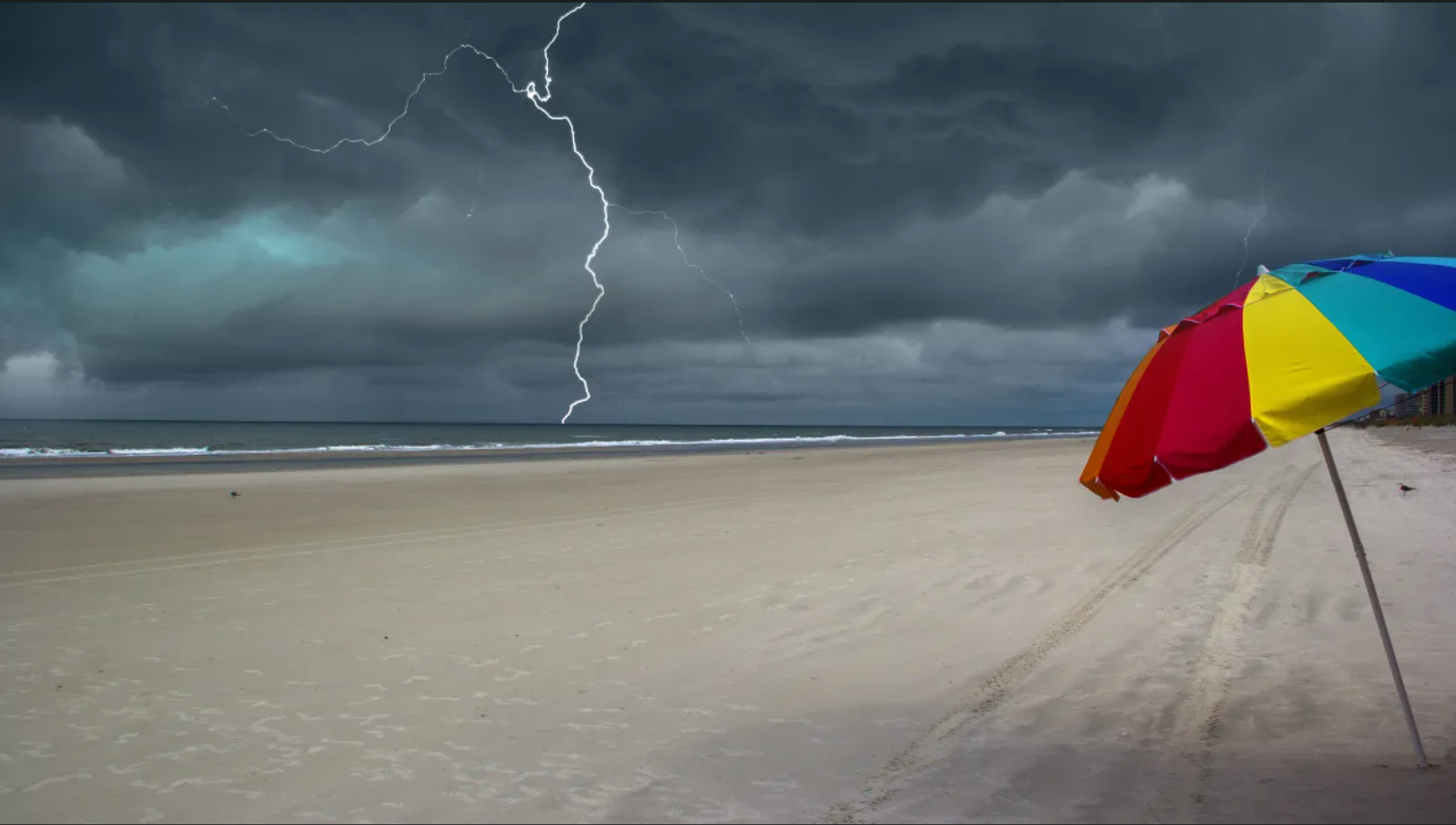When Thunder Roars, Head Indoors: Lightning Safety Awareness Week Guidelines For Window Cleaners

It’s Lightning Safety Awareness Week, which is June 23rd to June 29th this year. It’s a great time to highlight the risks of lightning strikes and the ways to stay safe from lightning, particularly for those in the window cleaning industry.
Outdoor work environments, high-rise buildings and the equipment used for the job, all make window cleaners particularly vulnerable to lightning strikes. So, here’s a guide to help you all stay safe during lightning storms.
We highly recommend following the links in this post to learn more about lightning and lightning safety.
Understanding the Risks
There are many ways people can be struck by lightning besides being directly hit. Also, lightning can strike 10 to 15 miles away from a storm, so you’re not necessarily safe if you don’t see clouds directly above you. Lightning is unpredictable, and for window cleaners, especially those working on tall buildings or using metal equipment, the risk is higher.
Even though only 10% of lightning strikes are fatal, injuries can include nerve damage, post-traumatic stress disorder (PTSD) and neurologic symptoms similar to brain injury.
Guide To Safety Precautions
Monitor Weather Conditions:
- Before starting work, always check the weather forecast. Utilize reliable weather apps and services that provide real-time updates and alerts.
- When working outdoors, supervisors and workers should continuously monitor weather conditions. Watch for darkening clouds and increasing wind speeds, which can indicate developing thunderstorms.
Establish a Lightning Safety Plan:
- Develop and communicate an emergency action plan for your team. Ensure everyone knows the procedures for halting work and seeking shelter.
- Identify and mark safe locations where workers can take shelter, preferably inside grounded buildings away from windows and doors.
Immediate Response to Thunderstorms:
- Stop working. At the first sign of thunder or lightning, cease all window cleaning activities. Remember the 30-30 rule: if the time between seeing lightning and hearing thunder is 30 seconds or less, lightning is already close enough to pose a threat. Remain indoors for at least 30 minutes after the last thunder clap.
- Avoid tall structures. Do not continue working on ladders, scaffolding, or elevated platforms during a storm. Lightning tends to strike the tallest object in an area.
- Note: While lightning tends to strike the tallest objects, it’s important to know that it doesn’t always. Again, lightning is unpredictable and can strike the ground or a car instead of a tall building.
Equipment Safety:
- Avoid metal. Many window cleaning tools and platforms are made of metal. It’s a myth that metal attracts lightning. It’s actually no more likely to be hit by lightning than any other object, but it is highly conductive, meaning lightning flows through it very well. This can lead to severe injuries or fatalities if you are near a metal object during a lightning strike. Non-conductive tools should be used wherever possible.
- Properly store all metal tools and equipment when a storm approaches. Ensure they are grounded and placed in a safe location where they won’t be a hazard.
Training and Awareness:
- Conduct regular safety training sessions on lightning safety, making sure all employees understand the risks and the procedures to follow.
- Use Lightning Safety Awareness Week to reinforce the importance of these practices. Distribute materials, host workshops, and engage your team in safety drills.
Takeaways for Window Cleaners
- Plan Ahead: Schedule window cleaning activities for times when thunderstorms are least likely, such as early mornings or non-peak storm seasons.
- Communicate: Make sure workers have communication devices to receive weather alerts and coordinate quickly in case of sudden weather changes.
- Have Quick Access to Shelter: Always ensure there’s quick access to a safe, enclosed shelter nearby when working outdoors.
- Stop Working: Follow the 30-30 rule to assess how close lighting might be. Immediately stop working and go inside at the first sign of thunder or lightning.
By implementing these guidelines and taking a proactive approach to lightning safety, window cleaning professionals can significantly reduce their risk during stormy weather. Stay informed, and ensure that Lightning Safety Awareness Week becomes an integral part of your workplace safety culture.
Stay safe out there!
Leave a comment